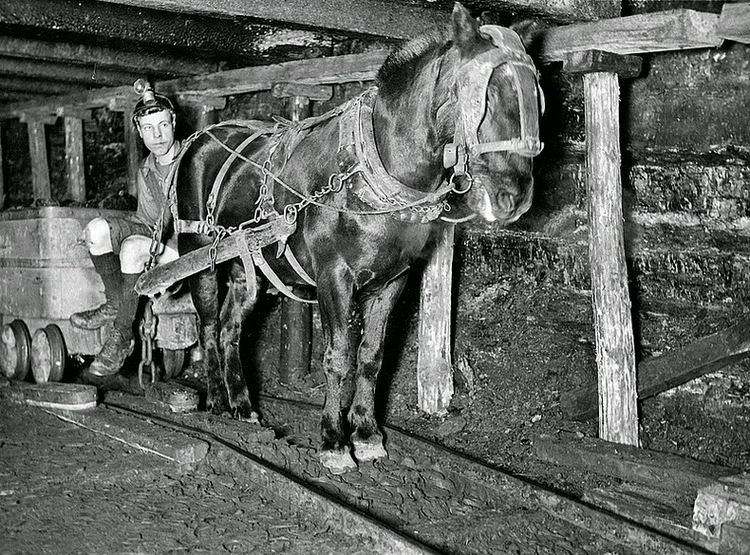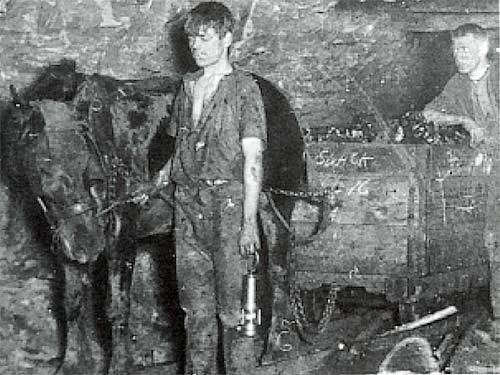 | ||
A pit pony was a class of pony commonly used underground in mines from the mid-18th until the mid-20th century. The term refers to the work done by the animal, and has sometimes been applied to any equines working underground, regardless of breed.
Contents

The first known recorded use of ponies underground in Great Britain was in the Durham coalfield in 1750. In the United States, mules outnumbered ponies in mines. The use of ponies was never common in the United States, though ponies were used in Appalachian coal fields in the mid-20th century.

At the peak of this practice in 1913, there were 70,000 ponies underground in Britain. In later years, mechanical haulage was quickly introduced on the main underground roads replacing the pony hauls, and ponies tended to be confined to the shorter runs from coal face to main road (known in North East England as "putting") which were more difficult to mechanise. As of 1984, 55 ponies were still in use with the National Coal Board in Britain, chiefly at the modern pit in Ellington, Northumberland. When Ellington closed for the first time in 1994, four pit ponies were brought out (no ponies were used there during the RJB era). Of the four, two went to the National Coal Mining Museum for England at Caphouse. The last surviving pony was Tony who died in 2011 aged 40.

Probably the last colliery horse to work underground in a British coal mine, "Robbie", was retired from Pant y Gasseg, near Pontypool, in May 1999. The last pony mine in the United States, located near Centerville, Iowa, closed in 1971.

She drew the gun pit pony official video
Breed and conformation
Larger horses, such as varieties of Cleveland Bay, could be used on higher underground roadways, but on many duties small ponies no more than 12 hands high were needed. Shetlands were a breed commonly used because of their small size, but Welsh, Russian, Devonshire (Dartmoor) and Cornish ponies also saw extensive use in England. In the interwar period, ponies were imported into Britain from the Faroe Islands, Iceland and the United States. Geldings and stallions only were used. Donkeys were also used in the late 19th century, and in the United States, large numbers of mules were used. Regardless of breed, typical mining ponies were low set, heavy bodied and heavy limbed with plenty of bone and substance, low-headed and sure-footed. Under the British Coal Mines Act of 1911, ponies had to be four years old and work ready (shod and vet checked) before going underground. They could work until their twenties.
Work
In shaft mines, ponies were normally stabled underground and fed on a diet with a high proportion of chopped hay and maize, coming to the surface only during the colliery's annual holiday. In slope and drift mines, the stables were usually on the surface near the mine entrance.
Typically, they would work an eight-hour shift each day, during which they might haul 30 tons of coal in tubs on the underground mine railway. One 1911 writer estimated that the average working life of coal mining mules was only 3 1/2 years, where 20-year working lives were common on the surface. Recollections differ on how well the ponies were cared for in earlier years.
